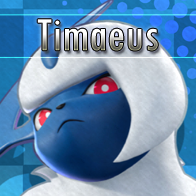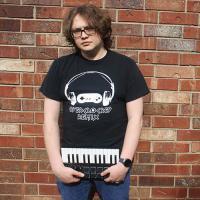Leaderboard
Popular Content
Showing content with the highest reputation on 05/21/2016 in all areas
-

What is the easiest VGM to transcribe?
Gario and one other reacted to José the Bronx Rican for a topic
Nowadays, it's dead easy to study source tunes for transcription; naturally it comes many years after my wave of experience in it since 1999 Since I'm a masochist, however, my return to transcription now involves heavy research into an entire 16-bit game's sound design and number of individual "patches" before I start inputting a single note. For "Contra Overdrive", I had each sound channel isolated and exported to wavs in a Sony Vegas workflow to get it done, then realized even that's not enough for the sake of authenticity. It's fine so far, tho: You don't have to go through all that. General MIDI has an extremely limited sound set to work with, so it's mostly satsfactory to go with patches that sound close enough to the original song, and with 16 separate channels to work with, you may even combine some patches using the same notes to get what you need. I'm assuming you have basic knowledge of General MIDI and posess sequencing software; if not, you're gonna have to learn a few things. Foobar and Winamp can play back the chiptune files out there (get most of 'em at OCR by searching the game) using plugins. OCR's own Chipamp will cover most of it in Winamp, but you can aso collect up-to-date plugins separately around the web. The best ones allow you to isolate each sound channel in the song for study, then you can export to wav or mp3 if needed. The "easiest" tunes to transcribe will not necessarily be the ones with the fewest channels, unless you think "Silver Surfer" would be a breeze to create authentically. They would likely be tunes that don't have any programming stunts done to enhance the sound - anything from pitch bends, vibratos and tremolos to arppeggios - that would require a great many notes to be entered or many CC controllers to be drawn. I chose "Contra Overdrive" mostly because of the challenge - the programming done there is insane! In the case of SNES, sampling may cover the stuff usually programmed in a synth-type chip. Simply listening may be the best way to determine how easy the transcribing job might be. You can also study most of the "simple" music that's likely already been transcribed: open in your sequencer and see how it's done.2 points -

Reddit Author Spotlight (5/21) - P.L. Rohe's Miu and the Tres Leches Bandit
Black_Doom reacted to Liontamer for a topic
My wife Paige is doing a Reddit Author Spotlight to talk about her self-published children's book & comic book, Miu and the Tres Leches Bandit. I'm in it too! Please support her and hit Reddit to ask her some questions RIGHT NOW! • http://reddit.com/r/books/comments/4kdxq5/hi_people_in_the_computer_im_pl_rohe_a_firsttime/ Learn more about the book at • http://miuthekitten.com You can buy the digital book on Amazon and ComiXology • http://amazon.com/dp/B016HC5JC8 • http://comixology.com/Miu-and-the-Tres-Leches-Bandit/digital-comic/313102 She used some chill OC ReMixes and VGM as BGM (lovingly selected by me) while working on the book, so it's VGM-powered. http://ocremix.org/remix/OCR024671 point -

The Jedi Steps - John Williams Mockup
Neifion reacted to timaeus222 for a topic
Great work! I thought the lead strings attack was a tad weird when they were more exposed (0:22, for instance, though elsewhere they sounded clean), but I found the brass to be particularly excellent.1 point -

CineSamples - Yes or No?
timaeus222 reacted to Nabeel Ansari for a topic
When individual sections are put together in a mix, it sounds even less organic. It's the sound of flutes playing alone, plus oboes playing alone, plus clarinets playing alone, etc. Ensemble playing isn't additive. It's not a bunch of vacuums with walls removed and everyone does their own thing. There's no synergy. There's no intrinsic balance between the musicians. Of course, ensemble patches also have flaws, like you said, different sections having the x-fades at exactly the same time has a not great effect. I'm not glorifying ensembles over individuals, I'm just stating facts here. Yes, you can't get individual sections with ensembles; but orchestrating for individual sections is very time-consuming and a lot of meticulous effort. Professional composers know this and compromise to what gets the job done in a timely manner with the best sound unless they're doing their magnum opus soundtracks where they have time to get all of that proper writing together. I used to think proper sectional arranging was the only way to go when I was younger; now I pretty much exclusively mix Metropolis Ark, Albion ONE, and CS2 (as well as some Embertone solos). I work pretty fast now. My music isn't super well "performed", but it sounds dazzling enough to a layperson for marketing purposes. On an actual gig, I'll spend the time expanding the orchestration and doing everything manual. Angel is of course welcome to dive into a FULL set of orchestral samples with breadth and depth, and that's why I also gave recommendations for those. @AngelCityOutlaw Your CineBrass + CS2 combo is great. If you have money, like Neifion said, Mural is much better strings (big orchestra strings) and Sable (small chamber, intimate strings). CineWinds being improved recently, I think it'll also be a good part of that lineup, though if you have the budget, Berlin Woodwinds is probably a better investment.1 point -

Overwatch Theme
Kapden reacted to AngelCityOutlaw for a topic
Woo000 Overwatch! Been planning on remixing this myself! Anyway, I'm going to assume you're looking for feedback? If so here are my critiques 1. The orchestral samples sound fairly fake and the intro takes much too long. Like, the violin crescendos sound choked/way too fast and the strings don't seem to sweep. They sort of "dip" in volume at the end of each chord really quickly. I'm not sure what you're using, but consider another modwheel pass there. 2. Everything is way too central. You've got toms in the center or very close to it, piano, lead guitar, etc. Pan stuff, but keep the low frequencies central. 3. The mix doesn't seem like it knows exactly what it wants to be. You start off orchestral, then go to a sort of metal vibe, then orchestral-metal then a sort of a dance beat. Couple that with the fact that there is essentially no build-up or fill before the rock starts and it all just feels very disjointed. 4. Obviously, you put your own spin on it, but the source is not very identifiable in much of the track. Like, your intervals are similar, but it's really not the Overwatch victory theme. Not to sound harsh, but if you hadn't labeled it as such, I probably wouldn't have guessed right away what it was a remix of. If you plan on submitting, I'd recommend making it closer to the original melodies. Compare to the source for reference!1 point -

CineSamples - Yes or No?
AngelCityOutlaw reacted to Neifion for a topic
Maybe I'm misunderstanding here as well, but it sounds to me like he simply wants better samples to make better-sounding music. It's a big game, could be played by a lot of people, so he wants it to sound the best with what he can afford. I spent a lot of money on libraries because I wanted them. I never went into a purchase thinking that I'd ever make any money back from using them. If that's the OP's intent, then I'd say that is not a good way of going about it.1 point -
My vocalist came through. Crunch time!1 point
-

The Jedi Steps - John Williams Mockup
Neifion reacted to AngelCityOutlaw for a topic
That was amazing!1 point -

OCR03353 - Golden Sun "Village Beautification in 5/4"
Patrick Burns reacted to TheMaverickk for a topic
I see everything, and it both makes me so happy to see this finished, and simultaneously sad because I couldn't bring this project to fruition. ; _ ; There are a lot of feelings inside of me as I listen. It is a beautiful remix of that happy village theme.1 point -

CineSamples - Yes or No?
AngelCityOutlaw reacted to Nabeel Ansari for a topic
I have CineSamples. It's okay. Some patches are amazing, like Horns legatos in CineBrass. The Winds are okay, they used to have bad noise issues and it got mostly fixed recently, but still nothing really inspiring. I have no comment on their strings, but I have a different recommendation for strings nonetheless. I think CineBrass is the strongest of the three, I would JUST get that one if you wanted CineSamples. For full orchestra, I recommend Albion ONE. Fantastic sound, mixability, and good legato patches. It's not split into each instrument section like most libraries but... it really doesn't matter if you're not doing meticulous orchestration. You have Highs, Lows, and Mids, and that's really all you need to paint really pretty pictures. Plus, the fact that it's pre-recorded as sections voiced together only makes it sound more organic when you have legato lines. For individual sections, as I said before CineBrass is good brass. For winds, CineWinds is okay and you get the main solos (clarinet, flute, piccolo, bassoon, oboe) which is good for a standard selection. Around VI-Control though, you'll see people talk very highly of Berlin Woodwinds, and their articulation switching system is out of this world. For strings, I have to recommend Cinematic Strings 2. CS2 is one of those libraries that everyone loves. It's simply designed and you just pop it into your project and it works. Has a great, full-bodied sound too, and with some good reverb it's honestly pretty convincing. I understand bundle pricing and all that is a big factor in a decision; if that's the case and it's important to you, then do get the CineSamples bundle. It's like the difference between a good chicken sandwich and a good cheeseburger; you're gonna have a good time either way.1 point

